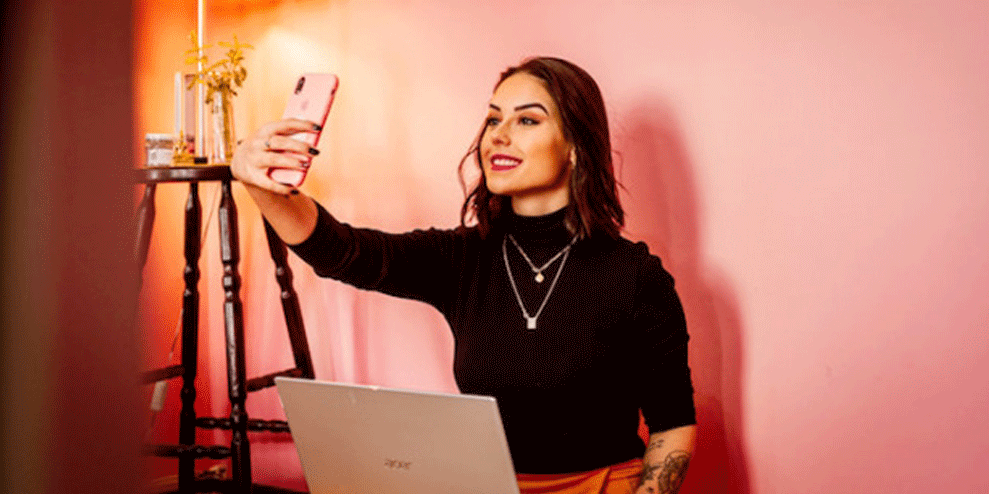An advantage of influencer marketing is the ability to create content quickly and build credibility with an active community. Anthony Richardson writes about how the industry is adapting and maturing in 2020 and why influencer marketing is more relevant than ever.
The two words that sum up the influencer marketing space over the past six months for me are creativity and credibility.
The pandemic has meant that budgets have had to work a great deal harder for marketers. In many cases, plans have had to pivot and brands have had to get creative about how to stretch their dollar further. Credibility has never been more important, as brands work hard to resonate with audiences during a time of uncertainty.
With consumers spending more time indoors (and as a result having more screen-time) influencer marketing is having its time to shine, coming to the fore as a go-to method for brands to communicate with their audiences, as budgets move away from Out of Home (OOH) and print.
The increasing trend towards influencer spend from brands is due in part to the ability of content creators to provide real-time value, through low production costs and the limited resources required to turn around on-brand content quickly.
While budgets may be smaller, more tools are readily available to measure the effectiveness of influencer marketing, meaning that it has proven itself to be a far more cost-effective way to deliver the same quality content and production value of major publishing houses for much less – and with more transparency.
This value is especially true for brands that find themselves having to react to current events with tight turnarounds. With content production teams unable to operate at scale, brands and agencies have leaned on influencers – often a team of one – to deliver creative content quickly and effectively.
Along with creativity, recent months have seen the credibility of the influencer marketing space rise significantly. One key trend that we have seen is a stronger focus on ROI and measurement from brands pre-campaign, which ensures influencers can deliver the results they need. Pre-campaign measurement creates a more professional way of doing business with content creators and is also a more transparent way of reporting.
Influencers have become a go-to voice for brands, sharing their opinions at scale. This isn’t new, but it’s certainly been expedited by the events of 2020. The value of influencers goes well beyond their ability to be accountable or create high-quality content on a smaller budget – influencers give a human voice to a brand’s values and beliefs, which is something that is needed more than ever during times of uncertainty.
Not only are content creators brand advocates, but they are also a real-life representation of the brands they support. They provide a way for brands to communicate quickly and credibly with their community, without having to go through the processes that can often be involved with large production teams. For example, instead of a physical event, if done right, live-streamed influencer content can be just as effective, and far quicker and cheaper to produce.
Category growth-wise we have noticed that gaming influencers have come out as one of the highest performing during the pandemic. Which is no surprise, given the amount of time consumers are spending indoors.
On top of gaming, other top-performing influencer categories are beauty, wellness, homewares and fitness. Unable to go to the gym, many influencers have had to create content from their homes, leading to the growing trend of home workouts and fitness inspiration. And since we are spending more time indoors, people have been investing at home beauty treatments, or redecorating the space they live in, both popular influencer content categories that have grown over the past six months and continue to be popular.
If, as a marketer, you are spending the money to create digital assets, it pays to think about how you could incorporate influencers to strengthen your plan, by creating supporting content that can be amplified across social media.
Looking forward to what the next year holds for the influencer space, I think we will see a merger/acquisition of TikTok by a US firm, allowing the platform to rival Facebook and Instagram. Instagram Reels will continue to gain traction and we will see an increase in well-known influencers moving to controversial pay to view (PTV) platforms.
If the trends over the past six months are anything to go by, the future of influencer marketing is incredibly bright, and the opportunities for brands are plentiful. As one of the only viable ways of advertising in this current climate, the industry is quickly adapting and maturing.
I believe that in the next twelve months, influencer marketing will finally get its seat at the table and will be considered a staple for any brand campaign, rather than an afterthought.
This article first appeared in marketingmag.com
Seeking to build and grow your brand using the force of consumer insight, strategic foresight, creative disruption and technology prowess? Talk to us at +971 50 6254340 or mail: engage@groupisd.com or visit www.groupisd.com/story




